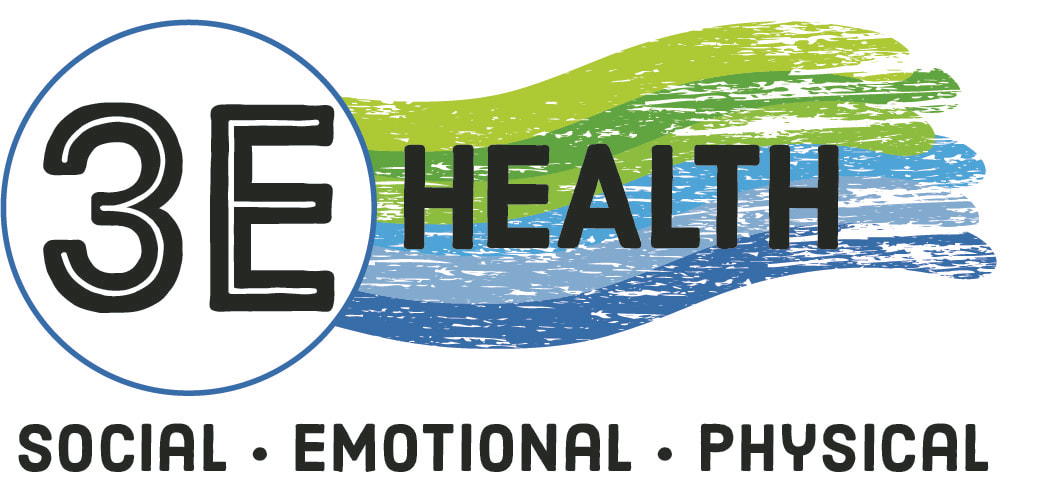|
By Karen Janzen Like many people, I struggled with a significant fear of failure growing up. So much so that as I look back on my extended adolescence, I see that my life was paralyzed by my fear of doing things the ‘wrong’ way; making the ‘wrong’ choices… choices that were predicted to bring me pain and shame because they weren’t bulletproof for success. As a result I tended NOT to make choices (which is also a choice… and a symptom of anxiety) and I often became a bystander instead of doing what we were meant to do: engage in life with all we have to offer. Now that I’m a parent, I understand that this came from my perception of the caring adults in my life trying to protect me from pain and grief. And while I also feel that natural pull to insulate my child, I’ve discovered that true growth and resilience will never have a chance to manifest without learning to engage with our discomfort. Nowadays, we sometimes refer to insulating kids as ‘ preparing the path for the child’, which seems to be correlated with increased anxiety, depression, and lack of connectivity of almost every kind, except digital. What many of us know we really want to do (but aren’t sure how to proceed) is to prepare the child for the path. When we empower the child to be aware of the message discomfort is giving, how to learn from mistakes (mis-takes… take 1… take 2), we’re actually facilitating growth, and engaging transformation. In fact pain and mistakes, what shame-researcher Brene Brown calls ‘vulnerability’, are the keys to social, emotional and physical growth. If we aren’t able to show our true selves, at least partly, to our inner circle, we are likely to have weak attachment which can lead to higher rates of anxiety, dysfunction, and lack of fulfillment. If we aren’t able to name, own, and share our own emotions, we end up missing life’s key directional messages AND we end up numbed out (disconnected), potentially dependent on whatever we use to numb (drugs, media, sugar, busyness, etc), also leading to dysfunction and lack of fulfillment. Even our bodies work on this general concept, in that the only way to build new muscle is to tear the existing muscle (making it vulnerable, often causing mild pain) to build a transformed muscle that is stronger and better. This thing of being able to develop, or transform, because of, or in spite of, one’s mistakes, is what we call resilience. I remember the first conversation I ever had about resilience. I was experiencing anxiety over choosing my dream career of being a youth worker in what was deemed as one of America’s most dangerous neighborhoods, versus making the ‘right’ (perceived worthy) choice of an established safer career. As I expressed my angst to an inspirational friend, he reassured me I could find happiness/worthiness regardless of any one of my single choices because I showed significant resilience, and with that I’d always bounce back. I asked him what that meant. He said, “Resilience is not about how much you get sick or knocked down. It’s about your capacity to recover. Sickness and failure are going to happen in life. Resilience is when you don’t stay sick. When you don’t stay stuck in the failure. You just need to connect with the things and people that heal you, and you recover very quickly.”  3E Health is about experiencing this kind of robust resilience. It’s about preparing the person for the path; teaching the person how to connect with life experiences (a vulnerable place to be). It’s about when adversity hits us, physically, socially, and emotionally, we’re able to manage our growth, maintaining connection to a life that means something to us (which is also what we call spirituality). For the record, I’m now a divorced, solo parent to a special needs child, doing the health promotion that I love on a modest income. It’s often a challenging life that I wouldn’t necessarily recommend. But it’s a robust, resilient life that is drenched in meaning and connected experiences, glistening in love for my child, others, the world around me, and ultimately myself. And perhaps learning to love ourselves is the biggest growth of all. References: Brene Brown "The Power of Vulnerability" June 2010. Retrieved from https://www.ted.com/talks/brene_brown_on_vulnerability?language=en
4 Comments
By Chad Oatway
Hating school as a child and adolescent seems to be a harsh word, but school was not fulfilling or rewarding in the classroom in a way that I believed school should have been. Sitting, listening, reading, writing, and regurgitating content is how I remember school. For me as a child, to me as a present day middle school teacher, knows that this type of learning is void of meaning and experiences. If any child, was like myself, they may think that they hate school and even more dangerously that they hate learning. As the old expression goes, “talk is cheap”, hence children and adolescents must experience connections in their learning over the emphasis on content. The world is fast paced and changing quicker than ever before. The cheap talk I remember as a student can still be present in many different ways in our society. However, this cheap talk has developed a cousin in the 21st century, which is the “cheap experiences” or instant gratification. Our adolescents now are having to navigate cheap experiences from cell phones, social media, gaming, selfies, heavily processed food, legalized and non legalized drugs, and the list goes on. With these cheap experiences wrapped in cheap talk it is hard to process what adolescents are going through, and even what many adults are struggling with in this digital age. Now tack on anxiety, depression, low levels of physical literacy, obesity, addiction, racism and all the other negative forms of “isms”, politics, and this race to the top has left our society stressed out and unhealthy in so many ways when looking at mental health and chronic illness. These effects have trickled down to our children and the future of our society. So where do we go now? Seeing my classroom through this lens of society could paint a negative picture, but I am an optimist. Having the opportunity to work with great educators and a lot of great youth have left me with this optimism and the ability to shape a positive future for our health. The goal is to move past cheap experiences and talk as educators, parents, and society to understanding that the experiences need to be meaningful, rich with ups and downs both socially, emotionally, and physically, for learning in the 21st century. Working with Bill Adair’s connection intentions to see “healthy emotional attachments are not taught, they are a product of actual connected emotional experiences” is why connection experiences for our youth are so important. This is the journey I as a teacher have made to be the most fundamentally important part of my teaching and classroom. Building a classroom based on connection experiences is the start of this process and through this the 3E Health model (see About 3E Health) focuses on social, emotional, and physical experience in the journey to health and wellness. 3E Health is the social, emotional, and physical connection of how health and learning can be brought together to enhance the brain's neurological pathways towards healthy connections. Looking at building the brain socially, emotionally, and physically needs to have challenge, failure, and stressors. Without stress in these three components, growth will be difficult. Day one of school for students is full of stressors that create social, emotional, and physical feelings within the body. Accepting that stress is taking place and is normal can be a powerful learning tool and does not need to be eliminated. Gabor Mate describes three universal factors of negative chronic stress and possibly chronic illness as, “uncertainty, lack of information, and loss of control”. These are the stresses that we should be addressing at the beginning of the school year. Taking away these negative factors associated with stress can empower students to find a comfort within themselves to embrace the challenges brought on by stress. Giving students consistent information and control over their learning needs to be meaningful in team building and the process of setting up a democratic classroom with high expectations. With using a play centred focus of 3E Health for these connection experiences that utilize stress is how I believe I can amplify connections and learning. Rephrasing Plato’s quote: “You can learn more about a person in an hour of play than in a year of conversation” to “You can learn more about [people in your class] in an hour of play than in a year of conversation.” Is why play will take a front and centered approach in learning, so students can learn about themselves and the people they will be working most closely with. In this blog, I hope to share my experience as an educator, coach, and parent working with youth to empower health. The 3E Health model focuses on social, emotional, and physical connection experiences of how health and learning can be holistically brought together is the center of how I am trying to build the brain. The ultimate hope is to aid in building healthy and actively engaged citizens for the future. References Adair, B. (2019). The Emotionally Connected Classroom: Wellness and the Learning Experience. Corwin. Mate, G. (2003). When The Body Says No: The Cost of Hidden Stress. Vintage Canada. |
Chad Oatway &
|

 RSS Feed
RSS Feed
